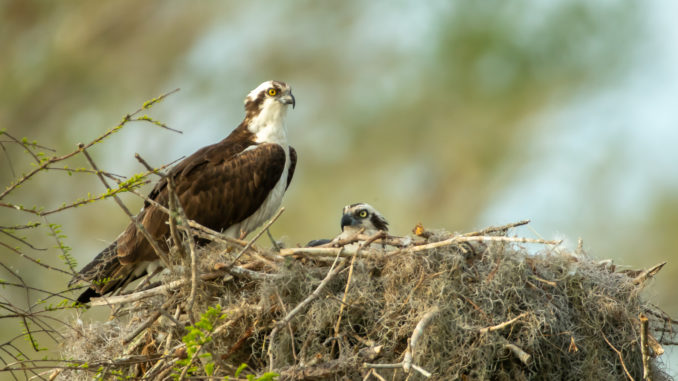
I find it interesting how we often think of nature as one specific way and only one way. No variations or exceptions. It is either this way or that way. Nothing in between. I have been traveling, studying and writing books about nature for over 30 years and the one thing that I have learned over and over again, is that nature is never the same. There are very few absolutes, very few definitive things in nature. There always seems to be a rule breaker that goes against everything ever written about it. And it’s these rule breakers that I find most interesting. I was reminded of this recently while leading a photography tour this past month in southern Florida to photograph birds.
Arrangements had been made to take a couple boats out on a freshwater lake in Central Florida to photograph Osprey. The Osprey is a remarkable raptor that was first officially described by Carl Linnaeus, the famous taxonomist, back in the 18th century. The Osprey is a very unique raptor that can be found worldwide. It is the second most widely spread raptor species, after the Peregrine Falcon.
Osprey are not related to any other raptors, leaving them as the only member in their family Pandionidea. The feet of Osprey are different from other diurnal (daytime) raptors. They have rounded talons, as compared to other raptors that have grooved talons. Plus, they have toes that are all equal length and one outer toe that is reversible, allowing them to have two toes pointing forward and two backwards. All other daytime raptors have three toes forward and only one towards the back. This really helps when it comes to gripping slippery fish, which is exactly what they do. They have a diet of exclusively fish.
Typically, one pair of Osprey will take up residents in a territory. The size of a territory depends upon the how many lakes or rivers are in the area and how many fish are found in these bodies of water. This means there is one pair of Osprey every couple of miles.
In many parts of the country, the Osprey only nests on man-made nesting platforms at the top of utility poles. If you read about them in books or look them up on the internet, this is the kind of information you will find. This is the standard and accepted description of how these kinds of bird’s hold territories and set up nesting.
However, when my group of photographers boarded the boats to go out to photography Osprey in Florida, we experienced something completely different. Along just one side of the lake was a colony of nesting Osprey. In recent years the lake level had gone up and flooded a section of the forest along the banks of the lake. This left hundreds of Bald Cypress trees now growing in shallow water. These are perfect conditions for nesting Osprey.
I could see that in some trees there was three and sometimes four nests. IN ONE TREE!!!! This was crazy. Many of the nests were just one tree away from another. There were dozens of nests in the first 100 yards of shoreline. When I inquired about how many nesting Osprey where on the lake, I was told that at last count, which was a couple years ago, there was at least 300 pairs of Osprey, all nesting in the same place. Many nesting just a few yards away from the next.
This is clearing the behavior of a rule breaker. In this part of Florida was something that wasn’t happening in any other places. It goes against all that we know about this species and its behaviors. This is the kind of thing that I find most fascinating. I’ve made a living out of studying animal behavior and all I could do was smile, because, right in front of us was a clear example of a bird species that is doing exactly what it needs to survive and reproduce despite the books we write about them or the behaviors we assign to them.
This is why I am so interested in nature. Mother nature sets its own agenda and follows its own rules and we are just observing and going along for the ride. Until next time…
Stan Tekiela is an author and naturalist who travels the U.S. to study and capture images of wildlife. He can be followed on www.facebook.com and twitter.com. He can be contacted via his web page at www.naturesmart.com.
